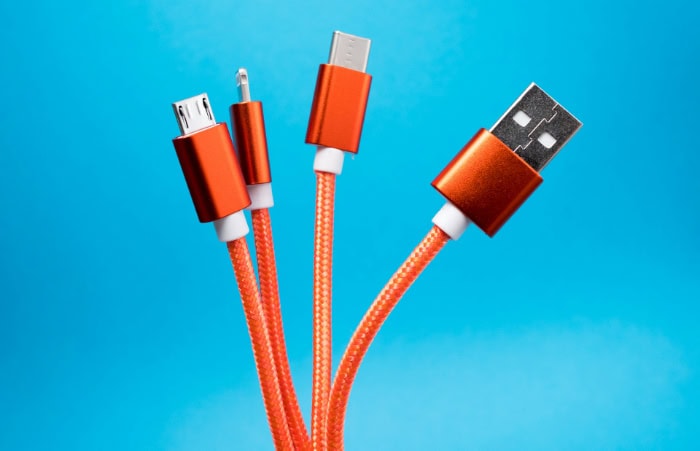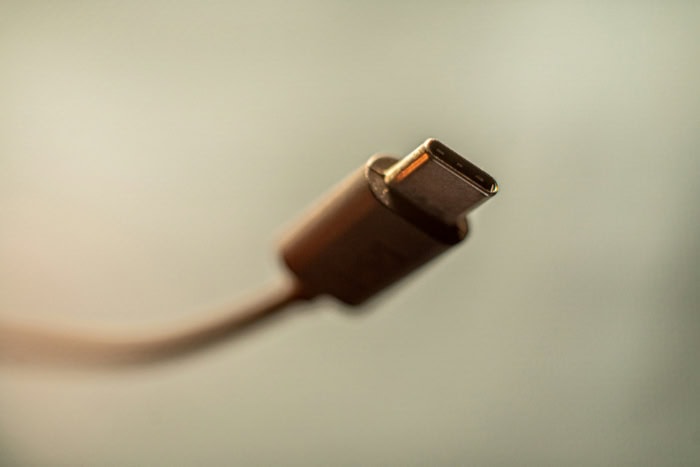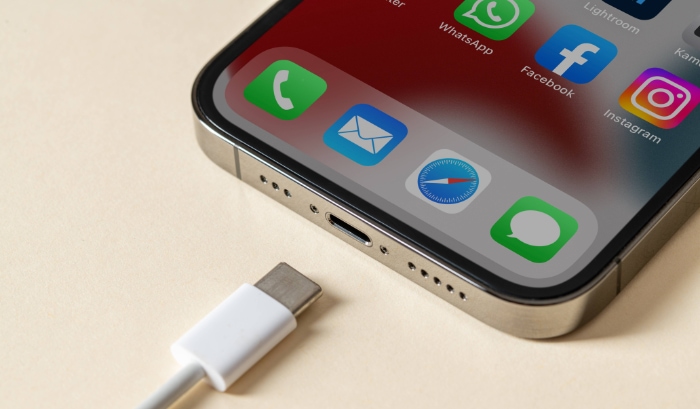Micro USB vs. USB-C: Which Cable Do You Need?

Most of us possess a chaotic drawer overflowing with tangled wires and mystery cords. You grab a cable to charge your headphones only to realize the connector is the wrong shape or size.
This common annoyance typically boils down to the conflict between two specific standards. Micro USB was the reliable veteran that powered our gadgets for over a decade. USB-C is the modern replacement promising universal compatibility and superior performance.
Physical Design and Usability
The most immediate distinction between these two standards lies in their physical construction. You can usually identify which cable you are holding just by glancing at the connector head.
While they might appear similar from a distance, a closer inspection reveals fundamental changes in engineering designed to resolve the mechanical annoyances of the past.
Shape and Visual Identification
Micro USB connectors feature a distinct trapezoidal silhouette. The bottom of the plug is wider than the top which gives it an asymmetrical appearance.
If you examine the metal head, you will typically see two tiny metal hooks protruding from the flat surface. These hooks are intended to latch onto the internal mechanism of the device port to hold it in place.
USB-C abandons the sharp angles for a smooth and oblong oval. The design is completely symmetrical with rounded edges on both sides.
It lacks the external locking hooks found on its predecessor which gives it a cleaner and more uniform look. The absence of a defined “top” or “bottom” is the first clue that the user experience has changed.
The Reversibility Revolution
Users have long struggled with the specific frustration of plugging in a Micro USB cable. You attempt to insert it, find resistance, flip it over, try again, and often still fail before finally getting it right.
The trapezoidal shape forces you to align the cable perfectly with the port. This rigid design requirement makes plugging in a phone in the dark nearly impossible without fumbling around.
USB-C completely eliminates this irritation. The connector pin layout is mirrored on the top and bottom.
That symmetry implies there is no correct orientation. You can insert the plug in either direction and it will function immediately. It serves as a significant quality-of-life improvement that saves time and reduces daily annoyance.
Structural Durability
Mechanical failure is a frequent complaint regarding older charging standards. Micro USB relies on those tiny metal hooks on the connector to keep the cable secure.
Repeated use often causes those hooks to flatten out or the receiving port to widen slightly. A compromised port leads to a loose connection where the cable falls out easily or only charges if you hold it at a precise angle.
The USB-C standard was engineered to withstand significantly more wear and tear. Instead of relying on fragile hooks on the plug, the retention mechanism is housed inside the port and designed to be more robust.
This construction allows for a satisfying “click” upon connection and maintains a secure fit that remains tight even after thousands of insertion cycles.
Speed and Power Capabilities

While the physical shape determines if the cable fits, the internal wiring dictates how well the connection performs. The shift to the newer standard represents a massive leap in utility that goes far beyond convenience.
We are moving from a technology designed solely for small mobile accessories to a robust interface capable of powering high-performance computers and moving massive files in seconds.
Charging Capacity and Power Delivery
Micro USB was built for an era of smaller batteries and less demanding electronics. It typically tops out around 15 watts of power throughput.
This limited capacity is sufficient for slowly charging a smartphone or keeping a Bluetooth speaker alive, but it hits a hard ceiling. You cannot physically push enough energy through the older connector to run larger electronics efficiently.
USB-C changes the equation entirely through a specification called Power Delivery. It supports power throughput up to 240 watts.
This immense capacity explains why modern laptops no longer require bulky, proprietary brick chargers. A single USB-C cable can now negotiate with the device to deliver the precise voltage needed, capable of scaling from a small trickle for wireless earbuds to a massive current for a high-performance laptop.
Data Transfer Speed Limits
Moving files is where the age gap becomes painfully obvious. Micro USB generally relies on the USB 2.0 standard which limits transfer speeds to a theoretical maximum of 480 megabits per second.
In practice, moving a large photo album or a high-definition movie takes a significant amount of time as the bandwidth is easily choked by modern file sizes.
USB-C opens the highway to modern speeds. Depending on the specific protocol supported by the cable and device, it can handle between 10 gigabits and 40 gigabits per second.
That is a difference of magnitude rather than a slight increment. Creators who work with 4K video or massive raw files require this bandwidth to work efficiently.
A transfer that might take twenty minutes over the older connection could finish in mere seconds with the new one.
The Fast Charging Reality
A common misconception is that the mere presence of a USB-C port ensures lightning-fast charging. That is not always the case.
The physical port merely unlocks the potential for speed which Micro USB physically cannot match. However, the port itself is just one part of the chain.
Actual performance depends on a specific handshake between the wall charger, the cable, and the device. If you plug a high-end phone into a cheap, low-wattage adapter using a generic USB-C cable, it will still charge slowly.
The new standard removes the physical bottleneck, but you must still ensure your charging block and cable are rated for the higher wattage to see the real-world benefits.
Versatility and Universal Connectivity
The true strength of the modern standard lies in its ability to perform multiple disparate tasks simultaneously. While earlier connections were specialized tools designed for specific jobs, the new interface acts as a universal tool for electronics.
It fundamentally changes how we interact with our devices by collapsing the function of several different cables into a single, streamlined solution.
Alternate Modes for Video and Audio
USB-C distinguishes itself through a capability known as Alternate Mode. This specification allows the connector to transmit non-USB signals through the same port used for charging and data.
A single cable can carry DisplayPort or HDMI signals which lets you connect a laptop directly to a high-definition monitor without a dedicated video port. It handles audio transmission just as effectively, allowing digital headphones to connect without a traditional 3.5mm jack.
That flexibility means a slim laptop can interface with projectors, external screens, and sound systems without needing a bulky array of separate ports on the chassis.
Unified Device Ecosystem
Micro USB has largely retreated into a niche for low-energy peripherals. You will typically find it lingering on older e-readers, budget rechargeable fans, or inexpensive wireless headphones.
It lacks the bandwidth and wattage to support anything more demanding than these basic accessories. USB-C connects the entire spectrum of modern hardware.
The same charger that powers a flagship smartphone can now juice up a tablet and a high-performance laptop. The shared compatibility simplifies daily life significantly since you no longer need to pack a separate brick and wire for every single piece of gear in your bag.
USB On-The-Go Improvements
USB On-The-Go (OTG) allows mobile devices to act as hosts for accessories like flash drives, keyboards, or mice. While Micro USB theoretically supports this functionality, it frequently struggles to provide enough electrical current to run the attached accessory comfortably.
Attempting to connect a mechanical hard drive to an older phone often results in connection failure because the port cannot power the spinning disk inside the drive. USB-C handles these power-hungry tasks with much greater reliability.
It provides a stable connection that allows you to edit files directly from an external solid-state drive on your tablet without worrying about the drive disconnecting midway through the process.
Compatibility and Obsolescence

The rapid adoption of a new standard often leaves consumers wondering what to do with their existing collection of accessories. It is easy to assume that anything with an older connector is destined for the landfill, but the reality is more nuanced.
The transition phase we are currently in means that both types of connectors will coexist for the foreseeable future, serving different roles based on the complexity of the device.
The Continuing Legacy of Micro USB
Micro USB has not vanished entirely despite being superseded in the smartphone market. It remains the most cost-effective choice for manufacturers producing simple, low-cost electronics.
You will likely still encounter this port on rechargeable camping lanterns, budget-friendly Bluetooth speakers, desk fans, and children's toys. These items generally do not require high-speed data transfer or rapid charging protocols, so the older standard serves them perfectly well.
The connector has effectively shifted from being the primary interface for high-tech gear to a utilitarian standard for basic household gadgets.
Bridging the Gap with Adapters
Throwing away functional cables feels wasteful, especially if you have invested in high-quality, durable wires over the years. Fortunately, simple adapters offer a practical workaround during this transition period.
Small dongles are available that snap onto the end of a Micro USB plug and convert the head to a USB-C shape. These inexpensive add-ons allow you to keep using your existing long cables or car chargers with newer phones.
While they will not enable faster charging speeds than the original wire supports, they allow you to maintain a backup charging option without buying entirely new accessories.
Regulatory Mandates and Standardization
Governments have recently intervened to accelerate the shift toward a single universal standard. The European Union enforced legislation requiring most portable electronics to use USB-C charging ports.
The primary motivation behind this move is to reduce electronic waste by ensuring consumers can use a single charger across all their devices regardless of the brand. This legal pressure forces manufacturers who previously relied on proprietary connections or stuck with cheaper Micro USB ports to upgrade their hardware.
Consequently, the market is standardizing much faster than it would have naturally, ensuring that future devices will almost exclusively rely on the modern interface.
Cost versus Benefit Considerations
Deciding between devices often comes down to the price tag, but the initial cost is only one part of the equation. While older technology might seem like a bargain upfront, the hidden costs of slow performance and limited compatibility can add up over time.
The Price Premium for Modern Tech
USB-C technology generally commands a higher price point than its predecessor. Manufacturing these connectors is more complex because they require precise engineering to handle higher power loads and faster data rates.
Consequently, a budget smartphone or accessory equipped with a modern port will often cost slightly more than a comparable model stuck with the older standard. Cables themselves also reflect this difference.
A high-quality cable capable of 100-watt charging involves thicker copper wiring and advanced controller chips, making it more expensive to produce than a basic Micro USB wire.
Future-Proofing Your Investment
Purchasing a device with a Micro USB port in 2025 is rarely a wise financial move for anything other than the most disposable electronics. Support for the older standard is rapidly vanishing.
Buying a phone, tablet, or pair of expensive headphones that relies on legacy ports means buying into an ecosystem that is already obsolete. You will be stuck with slow charging speeds and the inconvenience of carrying a dedicated cable for a single device.
Spending a little more now for modern connectivity ensures your gadget remains compatible with the chargers and accessories you will own five years down the road.
The Risks of Counterfeit Cables
The complexity of USB-C has introduced a new problem regarding cable quality. The market is flooded with cheap imitation cables that look identical to high-end versions but lack the necessary internal components.
A substandard cable might fit the port perfectly but fail to deliver fast charging or, in rare cases, damage your battery by regulating voltage incorrectly. It is crucial to look for reputable brands or certification marks, such as USB-IF, which indicate the cable has been tested for safety.
Trying to save a few dollars on a bargain-bin cable can end up costing you much more if it ruins an expensive device.
Conclusion
Micro USB served faithfully as the global standard for over a decade. It powered the first generation of smartphones and countless accessories, yet it has reached the limit of its technical capabilities.
The transition to USB-C represents a necessary evolution rather than a mere marketing gimmick. We now require cables that can charge a laptop in an hour, transfer 4K video instantly, and connect to a monitor without additional adapters.
USB-C delivers this versatility while finally solving the physical annoyance of non-reversible plugs.
When you stand in a store deciding between two devices, the type of charging port should be a primary consideration. Opting for the modern standard saves you from carrying multiple cables and ensures your gear remains useful for years.
While budget electronics may still cling to the older port to save pennies, the convenience of a unified charging ecosystem is worth the investment. Embracing the new interface simplifies your daily routine and ensures you are ready for the next generation of technology.


